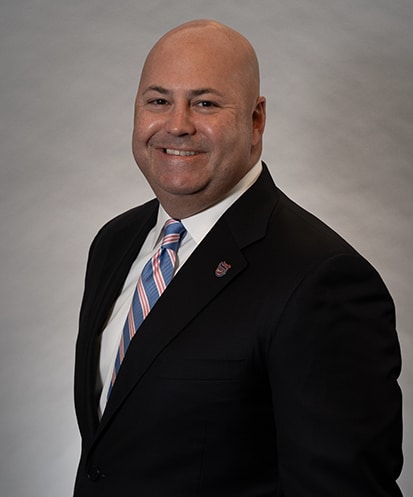Traffic Fatalities Reach Record High in 2021 Despite Fewer Miles Driven
 As the National Highway Traffic Safety Administration (NHTSA) begins releasing its data from 2021, we’re seeing some interesting statistics. As always, certain roadways remain dangerous and seatbelts continue to save lives. However, traffic accidents and fatalities have increased as a result of changing driving behaviors from the COVID-19 pandemic.
As the National Highway Traffic Safety Administration (NHTSA) begins releasing its data from 2021, we’re seeing some interesting statistics. As always, certain roadways remain dangerous and seatbelts continue to save lives. However, traffic accidents and fatalities have increased as a result of changing driving behaviors from the COVID-19 pandemic.
USA Facts reports:
Traffic fatalities increased more than 10% in 2021, according to preliminary data from the National Highway Traffic Safety Administration. The increase came along with a rise in out-of-state travel and greater miles traveled in 2021, rebounding after stay-at-home orders due to the COVID-19 pandemic in 2020. Most of the fatalities occurred on multilane highways and freeways.
This rising trend in fatal car accidents was felt right here in Washington DC as well, with DCist reporting that 2021 was the deadliest year on District roads since 2007. Per the publication, “at least 282 people were killed on the roads, a 6% increase from an already bad 2020 and a 12% increase from 2019.”
Experts attribute the spike in deadly crashes to increased speeding and reckless driving behaviors – which were much more tempting with emptier highways due to stay-at-home orders. One of the more concerning statistics DCist reports, however:
Half of the people killed in D.C. were not in a vehicle, with 17 pedestrians being hit and killed and three on bikes. Nine motorcyclists, nine drivers, and two passengers also were killed. Half of the deaths in D.C. came in Wards 7 and 8. The problem in D.C. has gotten so bad, that advocates are calling for a complete reset of the Vision Zero program Mayor Muriel Bowser committed to in 2015.
The Vision Zero initiative aims to “eliminate fatalities and serious injuries to travelers of our transportation system through more effective use of data, education, enforcement, and engineering” by the year 2024. Per DCist, the program is now being audited.
USA Facts also reports highways and arterial roads had the most traffic fatalities in 2021. These include “multilane highways, freeways, and other roads that connect the urban interstate system. Urban arterial roads also have the highest traffic volumes of any road type.”
However, it’s not all bad news:
Fatality rates, calculated by the number of deaths per 100 million miles traveled, have steadily decreased over time. Much of that decline can be attributed to advances in car safety features such as airbags and anti-lock brakes. Laws requiring seat belt usage also helped reduce traffic fatalities. Since 1990, traffic fatality rates have stayed under two deaths per 100 million miles traveled.
What does this mean? More people died in traffic accidents in 2021, but it took a lot more miles driven to get to that number of fatalities. All in all, traveling by car is pretty safe. But for the families of almost 43,000 people who were killed in a traffic accident in 2021, this is little solace.
Armed with all of these statistics, are there any initiatives underway to help combat these unnecessary traffic deaths?
A nationwide plan to reduce traffic fatalities
The US Department of Transportation (US DOT) and Secretary Buttigieg unveiled their National Roadway Safety Strategy program in January 2022. The initiative aims to improve the nation’s roads, highways, and transportation infrastructures, with the goal of eliminating preventable deaths and injuries. Per the DOT, “Roadway fatalities and the fatality rate declined consistently for 30 years, but progress has stalled over the last decade and went in the wrong direction in 2020.”
The National Roadway Safety Strategy program has a variety of programs and improvements both planned and in progress, including:
- Issuing a final ruling regarding rear-impact guards on commercial truck trailers and semitrailers with the goal of reducing fatal underride truck accidents.
- Upgrades to the New Car Assessment Program, including safety features like blind spot detection and intervention, automatic emergency braking, and lane-keeping assistance.
- The DOT’s Federal Highway Administration issued Complete Streets guidance, supporting local “transportation agencies to plan, implement and evaluate equitable streets and networks that prioritize safety, comfort, and connectivity to destinations for all people who use the street network.”
If you’re involved in a car accident
Now that more and more drivers are returning to our roads and highways, chances of being involved in an accident increase. Although fatality rates are indeed decreasing, accidents and injuries continue. Although you can’t prevent someone’s negligent or reckless behavior, you can follow a few steps to protect your rights when involved in a wreck with one.
Keep the following in mind after a car accident, prioritizing your physical safety above all:
- Contact the authorities, who will send police and emergency personnel
- Exchange information with the other driver(s), as well as any witnesses
- Take photos of the accident scene and damage to the cars, before the vehicles are moved, if possible
- Seek medical attention immediately, whether or not you feel injured
- Take photos of your injuries
- Report the accident to your insurance company – but do NOT give a statement or share any more than the required information
Then, contact an experienced attorney for knowledgeable help and guidance regarding your eligibility for financial compensation.
Finally, be safe out there. Buckle your seat belt, keep your car properly serviced, and certainly don’t drive impaired!
Please contact Paulson & Nace, PLLC, through this contact form or by calling 202-463-1999.

Christopher T. Nace works in all practice areas of the firm, including medical malpractice, birth injury, drug and product liability, motor vehicle accidents, wrongful death, and other negligence and personal injury matters.
Read more about Christopher T. Nace.
